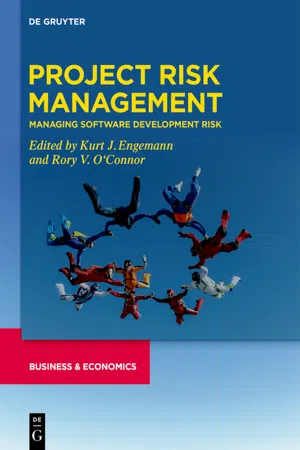
Project Risk Management
Managing Software Development Risk
- 284 pages
- English
- ePUB (mobile friendly)
- Available on iOS & Android
Project Risk Management
Managing Software Development Risk
About This Book
Managing risk is essential for every organization. However, significant opportunities may be lost by concentrating on the negative aspects of risk without bearing in mind the positive attributes. The objective of Project Risk Management: Managing Software Development Risk is to provide a distinct approach to a broad range of risks and rewards associated with the design, development, implementation and deployment of software systems.
The traditional perspective of software development risk is to view risk as a negative characteristic associated with the impact of potential threats. The perspective of this book is to explore a more discerning view of software development risks, including the positive aspects of risk associated with potential beneficial opportunities. A balanced approach requires that software project managers approach negative risks with a view to reduce the likelihood and impact on a software project, and approach positive risks with a view to increase the likelihood of exploiting opportunities.
Project Risk Management: Managing Software Development Risk explores software development risk both from a technological and business perspective. Issues regarding strategies for software development are discussed and topics including risks related to technical performance, outsourcing, cybersecurity, scheduling, quality, costs, opportunities and competition are presented. Bringing together concepts across the broad spectrum of software engineering with a project management perspective, this volume represents both a professional and scholarly perspective on the topic.
Frequently asked questions
Information
Part I: Fundamentals
1 Managing risks and opportunities in cyber-physical systems with software architecture assessments
1.1 Introduction
1.2 Background
1.2.1 Cyber-physical systems
Table of contents
- Title Page
- Copyright
- Contents
- Advances in project risk management
- Part I: Fundamentals
- Part II: Applications
- Index
- Developments in Managing and Exploiting Risk